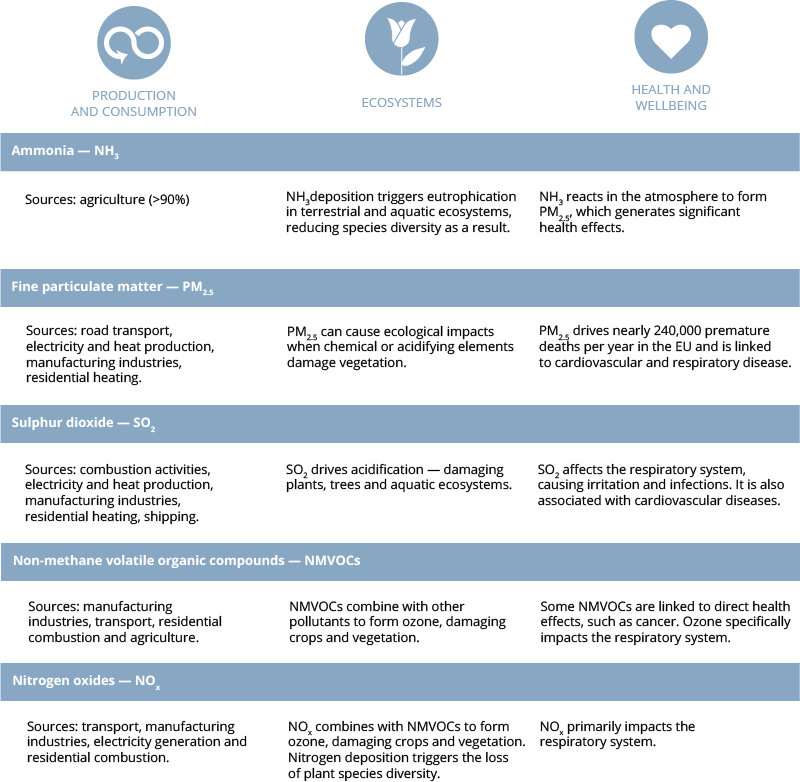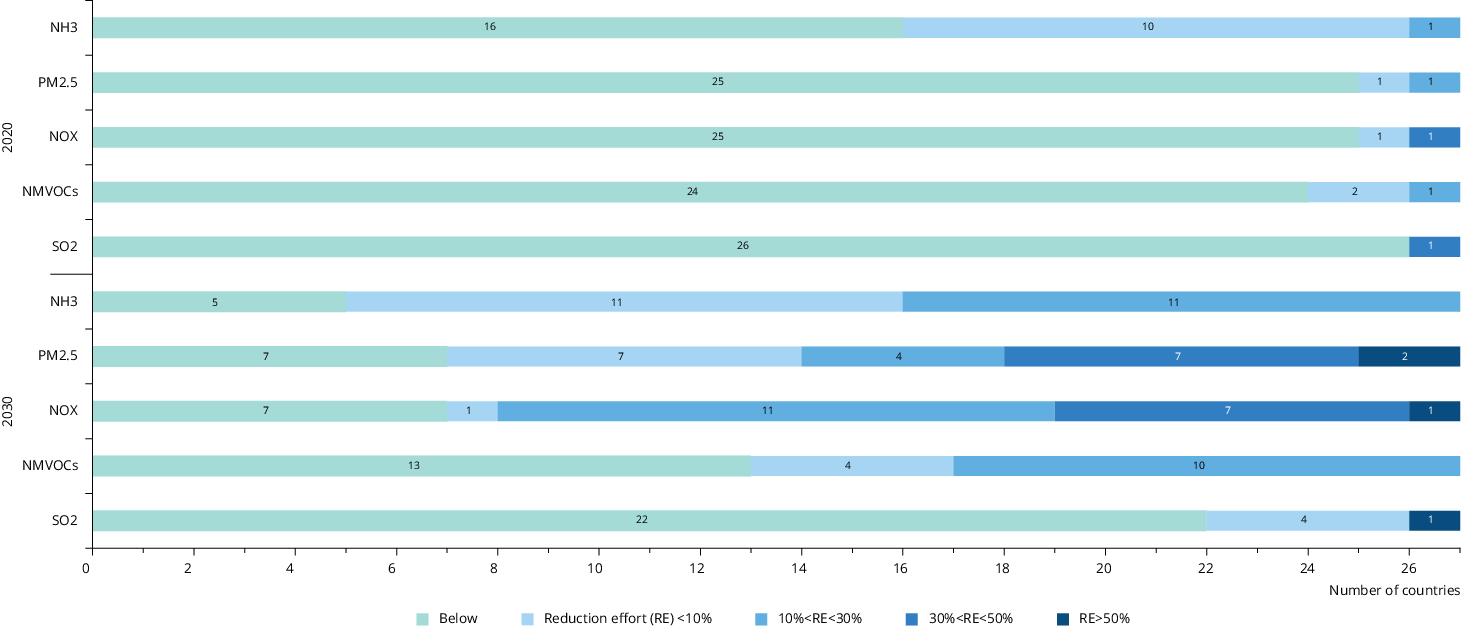The 2016 National Emissions reduction Commitments Directive (NEC Directive) sets emission reduction commitments for key air pollutants for 2020-2029. It also outlines more ambitious reduction commitments that will apply to each EU Member State from 2030. Member States are required to develop national air pollution control programmes for five main air pollutants: nitrogen oxides, non-methane volatile organic compounds, sulphur dioxide, fine particulate matter and ammonia.
By targeting emissions from the industry, transport, waste, agriculture and energy sectors, the NEC Directive takes a cross-cutting approach to managing air pollution, benefiting both ecosystems and health (see Figure 1). Effectively implementing the NEC Directive will help deliver a number of zero pollution targets, particularly those to reduce premature deaths from air pollution by 55% and reduce the number of EU ecosystems impacted by air pollution by 25%. Measures to reduce ammonia emissions from agriculture can also support the target of reducing nutrient losses.

Assessment of progress: 2020 and 2030
To achieve these zero pollution targets, it is vital that EU Member States meet their emission reduction commitments for 2020-2029 as well as for 2030 onwards. Figure 2 presents the number of Member States currently meeting their national reduction commitments for the five key pollutants set for both 2020-2029 and 2030. Among those not meeting these commitments, it also shows the number that need to reduce emissions by less than 10%, 10-30%, 30-50% and over 50%.

Source: EEA, 2022.
Click here to view the figure enlarged
Click here for different chart formats and data
In 2020, 13 Member States met their national emissions reduction commitments for all five main pollutants. However, 14 Member States failed to meet at least one of their five commitments. The biggest challenge for the period 2020-2029 will be reducing ammonia emissions in line with the agreed commitments — 11 Member States need to improve in this respect.
However, a continuous focus on reducing all pollutant emissions is also needed to ensure that countries reach their more ambitious emission reduction commitments for 2030 and beyond. All Member States except Belgium and Estonia need to reduce emissions of at least one pollutant to fulfil their 2030 commitments. Almost two thirds of Member States need to reduce ammonia, nitrogen oxide and fine particulate matter emissions to meet their 2030 commitments (EEA, 2022).
The European Commission’s Third clean air outlook also concludes that many Member States need to significantly step up efforts to reduce ammonia emissions to comply with the NEC Directive’s requirements (EC, 2022). Increased effort will also ensure that Member States are on track to achieve the zero pollution target of reducing the number of ecosystems threatened by air pollution by 25%. The clean air outlook identifies the appropriate emission reduction measures for each Member State; these focus on the agricultural sector and, in particular, aim to reduce emissions from cattle, pigs and poultry, and the application of mineral fertiliser (EC, 2022).
References
EEA, 2022, National Emission reduction Commitments Directive reporting status 2022, EEA Briefing, European Environment Agency (https://www.eea.europa.eu/publications/national-emission-reduction-commitments-directive-2022) accessed 8 November 2022.
EC, 2022, Report from the Commission to the European Parliament, the Council, the European Economic and Social Committee and the Committee of the Regions, ‘The third clean air outlook’, COM (2022)673, European Commission (https://environment.ec.europa.eu/topics/air/clean-air-outlook_en).
Cover image source: © Matjaz Krivic, Well with Nature /EEA


Document Actions
Share with others